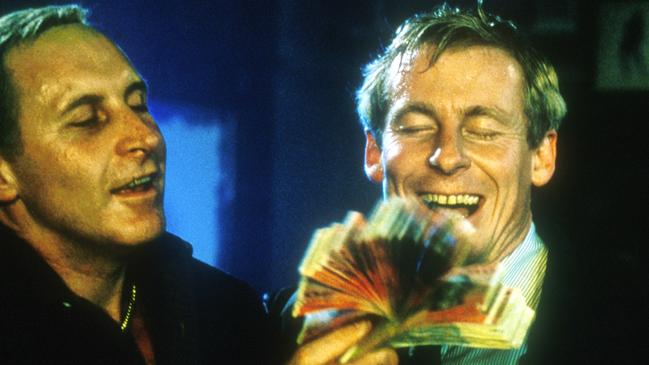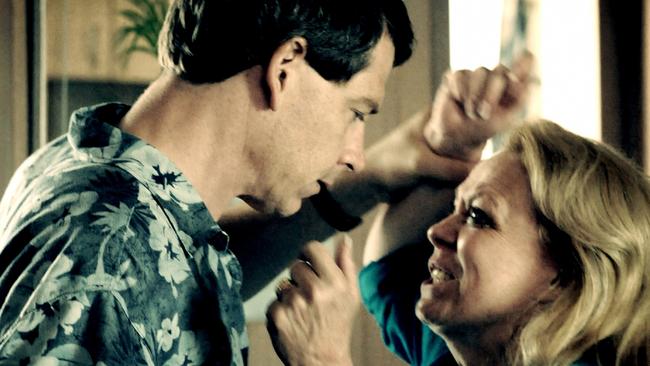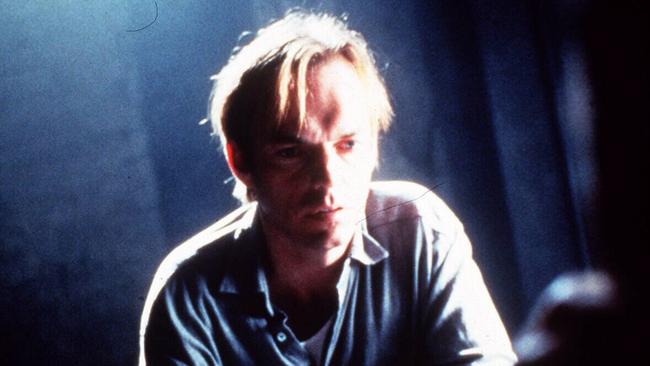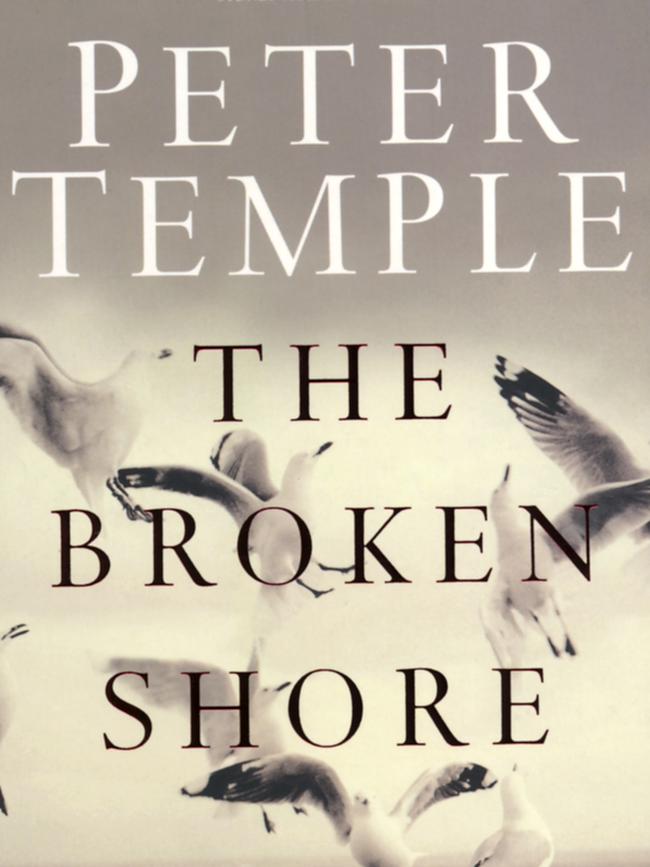A crime lover’s guide to summer reading and viewing
Deadline writers Andrew Rule and Mark Buttler offer up some crime gems in this rough guide to summer reading and viewing.

Entertainment
Don't miss out on the headlines from Entertainment. Followed categories will be added to My News.
Deadline’s rough guide to crime films, books and TV series for summer entertainment.
BLUE MURDER
This journey through the Wild West of crime and corruption of 1980s Sydney still stands up today.
It revolves around the relationship between rogue cop Roger Rogerson and gangster Neddy Smith, a bond cemented by cold-blooded murder and high-level narcotics trading.
Richard Roxburgh is brilliant as Rogerson, a rogue’s rogue in “the best police force money can buy”.
Tony Martin’s chilling portrayal of the evil Smith is a million miles from his turn as the Reverend Bob in E-Street. Others from one of the all-time best Australian casts include Gary Sweet, Bill Hunter, Peter Phelps, Steve Bastoni, Alex Dimitriades and the late, great John Hargreaves.
Enough of this story is true to make the viewer ponder the New South Wales justice system ended up in such a state.
Not a second of screen time is wasted in this A-grade production, originally shown as a mini-series on the ABC in 1995.
Some of the violence is confronting but there are also fine moments of black humour.
— Mark Buttler

MR INBETWEEN
Occasionally, something turns up that’s original, different and timeless. It happened a lifetime ago with Callan, starring Edward Woodward as a hard-as-nails working class British spook. It happened with The Sopranos, The Wire and Breaking Bad, the TV equivalent of literature. Now, Australia has Mr Inbetween.
The idiosyncratic Scott Ryan, who might have overdosed on Elmore Leonard, Chopper and Tarantino at an impressionable age, long ago invented a suburban hitman, Ray Shoesmith, first seen in a mockumentary, The Magician, in 2005.
Ryan plays Shoesmith better than anyone else could, brilliantly directed by the connected Nash Edgerton and produced by Chopper’s Michele Bennett, who backed Ryan when “the business” dismissed him as an eccentric amateur.
Ryan is to Ray what James Gandolfini is to Tony Soprano: unforgettable. He’s a stone killer and loving father who wrestles with his conscience except when making other people unconscious. The budget is tiny but, like Ray, Mr Inbetween punches so far above its weight it’s ridiculous.
— Andrew Rule

ANIMAL KINGDOM
A gritty Melbourne crime film that is not quite a true story but has enough echoes of real life to give it a chilling extra dimension.
Writer-director David Michod’s 2010 production shows a strong understanding of crime and policing, drawing on people and events that many viewers will recognise.
There are elements of the Pettingill-Allen crime family, the 1988 Walsh St police shootings and themes of crooked cops and the heartbreak that drugs can cause.
Some great Australian actors are prominent. One who became far more prominent as a result is Jacki Weaver, who booked a ticket to Hollywood after playing the Cody family matriarch Smurf, a manipulative presence prepared to do anything to protect her outlaw brood.
One of them is the emotionless Andrew “Pope” Cody, played with mesmerising malevolence by Ben Mendelsohn. Guy Pearce is at his usual best as the honest, dogged investigator whose efforts are undermined by rotten-as-a-chop colleagues.
Sullivan Stapleton plays hot-headed Cody brother Craig with great conviction, as does Luke Ford in the role of the reluctant brother Darren.
Even those without any knowledge of crime in Victoria will enjoy this outstanding work.
— Mark Buttler

TWO HANDS
A new kid called Heath Ledger joined a veteran Bryan Brown to star in this crackerjack comedy crime yarn set in inner Sydney in the late 1990s. There’s violence, senseless and otherwise, the predatory worthlessness of the criminal classes, robberies, car chases and the good guy gets the beautiful girl. There’s even a bit of mystical supernatural action. In between all that there are killer performances by a new star making his entrance and by an old one setting a high bar. Ledger’s 19-year-old nightclub promoter Jimmy and Brown’s gangster boss Pando are two of the finest crime characters written in this country, alongside Eric Bana as Chopper and David Wenham as the no hoper petty crim junkie ‘Spit’ Spitieri in Gettin’ Square. The plot involves small-time Jimmy losing ten grand belonging to big-time Pando when two street kids pinch his bag while he’s having a swim. So he has to rob a bank to pay the money back or is going to turn up dead. What could possibly go wrong?
— Andrew Rule

PHOENIX
The entire 1993 ABC series seems to be available for nix on YouTube, and what a great show it is.
Based loosely on the Russell St Bombings and subsequent inquiry, Phoenix is a gritty depiction of high-level criminal investigation with deep knowledge of police technique, procedure and politics.
Those cast as the cops — including Simon Westaway, Paul Sonkkila and Peter Cummins — bring a gritty authenticity to the roles.
Sean “The Goose” Scully is the eccentric forensic man who butts heads with the detectives but eventually wins their respect, unearthing vital clues and evidence.
For those who can find it, there is the equally excellent follow-up series Janus, clearly based on a Melbourne crime family.
The previously unknown Brett Swain is outstanding as the menacing Mal Hennessy, one of the great Australian fictional crime figures.
Those more skilled than Deadline (that means just about everyone) might find a way to buy or stream it.
— Mark Buttler
THE INTERVIEW
This criminally under-rated film is well worth another viewing.
Hugo Weaving has done great work over several decades but this 1998 suspense piece is among his best.
Weaving plays the inscrutable Eddie Fleming, a man arrested by undercover cops and thrown into an interview room.
Did he do it or not? Tony Martin’s aggressive detective John Steele thinks he did but finds himself under pressure as a protracted battle of wits wears on.
A film full of mind-games and twists, largely confined to the police station’s interview room.
Other notables in the cast include Paul Sonkkila, Michael Caton and Aaron Jeffery.
— Mark Buttler

UNTOLD VIOLENCE by Tom Noble (1989)
It’s as old as the hills but has aged as well as Grange Hermitage and is still a riveting read.
Written by a well-connected Melbourne newsman, it carefully explains elements of crime in Melbourne, including old-fashioned bank robbery crews, police shootings, the flesh trade and a terrorist bombing.
But the longest and standout section centres on notorious heroin dealer Dennis “Mr Death” Allen and the world that revolved around him.
The book outlines in fine detail his sinister family group, the brutal murders he committed and his colonisation of a small section of Richmond.
The reader is left to wonder how he got away with so much for so long.
— Mark Buttler
A GREEN LIGHT by Ray Mooney (1988)
It’s no wonder some suggest that Mooney’s searing novel, based on real-enough events and characters, might be the best insider account there is of late 20th century Australian crime.
Mooney, an outstanding schoolboy athlete, intelligent and educated, did jail time with some of the hardest men in the underworld, and got to know some, notably the charismatic and deadly standover man Christopher Dale Flannery, known as “Rentakill”.
When he first published his novel, the once moody Mooney avoided obvious comparisons between the real Flannery and his fictitious Johnny Morgan, not to mention some other fairly identifiable characters. But as various underworld figures have joined Flannery on the missing list, the now more mellow writer has acknowledged the link.
The title is a reference to the “green light” that certain crooks had from corrupt police, who let them commit crimes providing they paid huge bribes and didn’t shoot “citizens” or point guns at police.
The world Mooney depicts in his novel overlaps with the one that Tom Noble depicts in his nonfiction works Untold Violence and Walsh Street. All are as readable now as the day they were published.
— Andrew Rule
ROBBERY UNDER ARMS by Rolf Boldrewood (1882-1889)
Rightly regarded as the Australian colonial crime classic alongside Marcus Clarke’s For the Term of His Natural Life, this novel is still enormously readable, which is why it has been adapted for the screen so many times. It begins on death row, with remorseful young bushranger Dick Marston contemplating his imminent hanging and telling his life story in flashback.
The author, real name Thomas Alexander Browne, was a prolific writer, drawing on his experiences as a Goldfields Commissioner and police magistrate, but nothing else he wrote matched the narrative drive of this novel, which hasn’t been out of print since 1889.
My grandfather, not a prolific reader, once told me that as a teenage farm labourer, he spent all night (about 1905) reading Robbery Under Arms by candlelight and went to work at dawn without any sleep rather than put it down.
A contemporary English critic called Robbery Under Arms “a classic, which for life and dash and zip and colour — all of a period — has no match in all Australian letters.” But here’s the clincher: it’s widely held to have inspired the 1902 American novel The Virginian, regarded as the first western. Top that.
— Andrew Rule
THE BROKEN SHORE by Peter Temple (2005)
The late Peter Temple won his biggest literary prize, the Miles Franklin, for his novel Truth but it was probably belated recognition for its prequel, the brilliant The Broken Shore, published three years earlier.

There is, of course, a satisfyingly twisty plot in both novels, but Temple was always more than a whodunit genre writer. His characters and dialogue are as perfectly bitter-sweet as anything in contemporary literature.
Although The Broken Shore deserved all its crime-writing gongs, the crime element is almost incidental to the quality of the story he tells of jaded city cop Joe Cashin, who is posted back to his hometown — a barely-disguised Port Fairy — to mend his wounds, not all physical, after the compulsory brush with death that has left him with enough post traumatic syndrome to be the protagonist in a modern detective yarn. That Temple’s battered hero is a version of many another wounded cop, before and since, is absolutely no criticism. As with comedians and their jokes, it’s how he tells the story that matters most. Better critics than this one reckoned he was nearly pitch perfect, even a cut above his popular Jack Irish yarns.
Les Carlyon said this might just be “a great Australian novel, irrespective of genre” and the Courier Mail said “every word in The Broken Shore contains meaning… It’s deliciously brutal and spare, full of unambiguous violence, prejudice and hatred one moment, and cavernous instances of insight and revelation the next.” Graeme Blundell said “It might well be the best crime novel published in this country.” No one is arguing.
— Andrew Rule


